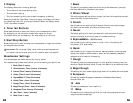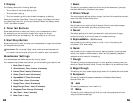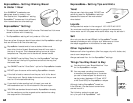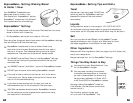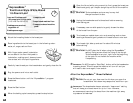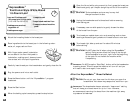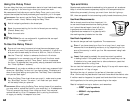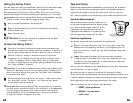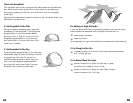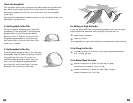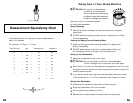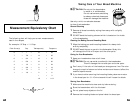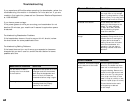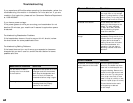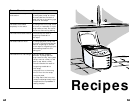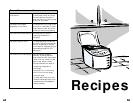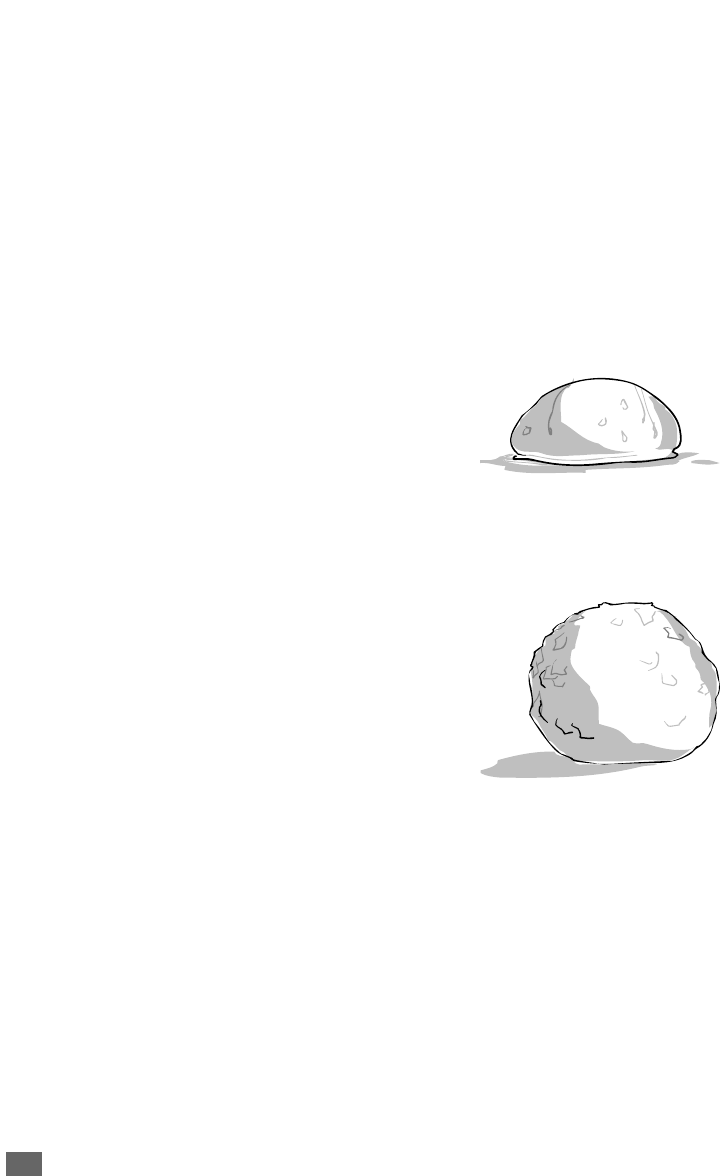
21
For Baking at High Altitudes
If you live above 3000 feet, you probably already know how to adjust
other recipes like cakes and muffins. Higher altitudes tend to:
➢
make dough rise faster
➢
make flour drier
To compensate for high altitude baking, we recommend the following:
If the Dough Is Too Dry
➢
increase the amount of water to the recipe, sometimes as much
as 2 – 4 Tbsp. per cup.
If the Bread Rises Too High
➢
reduce the amount of yeast. For each tsp. of yeast,
try reducing the yeast by 1/8 to 1/4 tsp.
➢
reduce the amount of sugar. For each Tbsp. of sugar,
reduce the amount by 1 to 2 tsp.
20
Check the Doughball
This is a secret well known to people who make bread the old-fashioned
way. While hand kneading the mixture, they adjust the consistency of
the dough by adding a little flour or a little water until the doughball
is just right.
Although the breadmaker kneads the dough for you, this secret is still true.
Here’s what you should do:
If the Doughball Is Too Wet
During the second kneading cycle, check the
consistency of the doughball. If the doughball
appears sticky or wet, like pancake batter,
sprinkle in flour, a Tbsp. at a time, until the
doughball appears smooth, round and dry,
and circles nicely in the pan. Sprinkle a little
more flour if needed.
If the Doughball Is Too Dry
If the doughball appears flaky, or you hear your
breadmaker begin to make “knocking” sounds,
the dough ball is too dry. To correct this
problem, simply sprinkle in water a tsp. at a
time, until the doughball appears smooth,
round and dry, and circles nicely in the pan.
Be careful not to add too much water.



